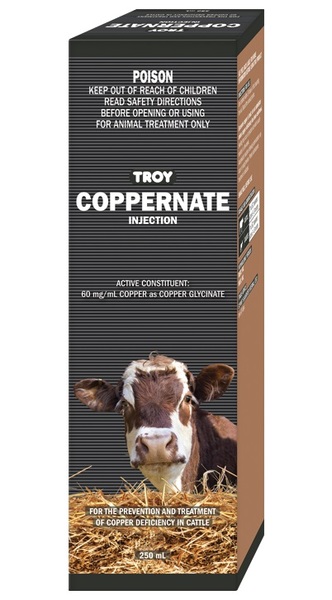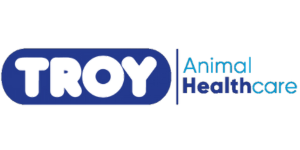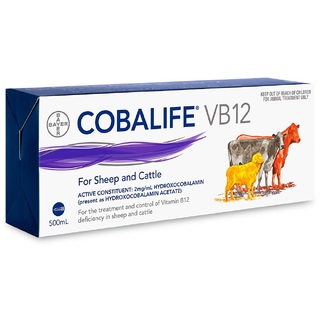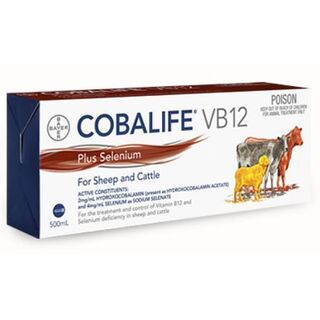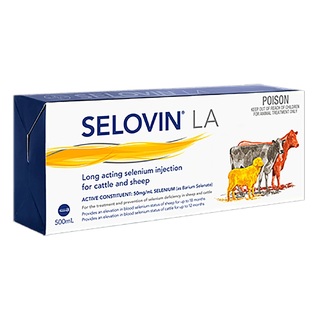Troy Coppernate 250ml (Copper Inj)
Coppernate Injection
Active Ingredient: Copper As Copper Glycinate @ 60 mg/ml
Similar or comparable to Copperplan Copper Injection for Cattle (Elanco)
Coppernate Injection is used to prevent and treat copper deficiency in cattle. Coppernate supplies elemental copper, gradually absorbed from the injection site and transported to the liver. As a consequence, liver levels of copper will gradually rise. Copper is a component of some essential body enzymes. Signs of Copper deficiency include unthriftiness, scouring, poor fertility and lightening coat colour with “spectacles” in cattle.
Why choose Coppernate Injection;
- A proven formulation of bio-available copper.
- Stays in suspension.
- Easy to administer.
- It flows well even in cold weather – very easy to shake into suspension even on the coldest mornings.
- No sediments – no gritty particles that block the injector.
- Nil Meat withholding.
- Convenient 250mL pack size.
Copper is an essential trace element for animals for body growth, bone growth, pigmentation, healthy nerve fibres and white blood cell function. There are two main causes of copper deficiency in cattle: low copper levels in plants due to a lack of copper fertiliser in naturally copper-deficient soils; and an induced deficiency caused by ingestion of excessive levels of molybdenum and sulphur in pasture or feed supplements. Coppernate Injection is used to prevent and treat copper deficiency in cattle.
What are the signs of copper deficiency in cattle;
- Loss of pigment from coloured hair, especially around the eyes, gives the animal a bespectacled appearance (not visible in cattle with white hair around the eyes).
- Falling disease – sudden heart failure causing sudden death.
- Lameness.
Preventing copper deficiency with Coppernate Injection;
Copper compounds like Coppernate Injection injected under the skin (copper glycinate, calcium copper edetate) can correct a deficiency but must be repeated every four to six months.
Which cattle are most at risk of copper deficiency;
- Pregnant, lactating and growing sheep and cattle.
- Sheep and cattle that have been grazed at excessive stocking rates
- Cattle with heavy worm (Ostertagia) infestations

